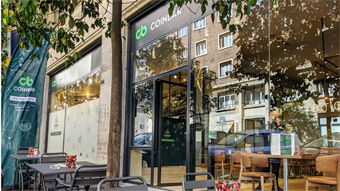Retail requires a nuanced investment approach in global upturn
- In Comment
- 11:15, 19 April 2018
- 953 Views

New research from Union Investment Real Estate into the attractiveness of retail markets worldwide sees Poland, Portugal, Ireland and the Czech Republic shine in a changing European market, while North America maintains its considerable appeal.
Retail markets worldwide appear to be in good shape at the beginning of 2018. A further increase in optimism among both customers and businesses in almost all investable markets is driving this positive trend. On the downside, higher consumer prices and below-average growth of retail sales are having a negative impact, particularly in Europe.
North America currently tops the ranking of the most attractive retail regions worldwide, showing a strong increase in sales. The region scores 115 points in the new Global Retail Attractiveness Index (GRAI) created by Union Investment, which analyses the environment for retail investment in 17 countries worldwide.
While the index for North America rose by 10 points over the course of 2017, the EU-12 index, which covers twelve European retail markets, declined by three points and cur-rently stands at 112 points. The Asia-Pacific index is in similar territory, at 110 points, having gained seven points due to the sig-nificantly more upbeat mood among cus-tomers and retailers in South Korea and Japan.
Customer and retailer sentiment improved significantly in all the surveyed regions on the back of a global uptrend, leading to all three indexes now showing above-average values.
Despite both North American markets facing challenges due to a surplus of retail space, they continue to perform well. European retail markets, mean-while, are experiencing vastly divergent developments. Germany and Poland in particular, which are the top countries in the European ranking, make a significant contribution to the strong performance of the EU-12 index, scoring 120 points each.
Of all the European countries surveyed, the Polish retail market stands out as being the most dynamic, boasting an impressive eight-point increase year on year, thanks to above-average retail sales growth. The second-strongest performance was seen in Ireland, which gained three points, also benefitting from improving sales.
The picture is similar in Poland and the Czech Republic. With its 117 points, Ireland joins the top 5, which include Germany (120), Poland (120), Portugal (118) and the Czech Republic (116).
The EU-12 index is significantly impacted by the steep fall in the British index.
The uncertainty caused by the discus-sion around the consequences of Brexit is palpable in the British retail market, particularly in the UK regions. In London, though, the propensity to consume remains high. The Brexit shock caused all four mood and market indicators to decline dramatically over the course of 2017. The British retail index fell by 21 points to 97, pushing it to the bottom of the European ranking.
Apart from the huge challenges facing the British retail market, the fundamentals of the retail sectors in Europe, North America and the Asia-Pacific region continue to improve.
The global uptrend will continue to drive the retail sector’s transformation, with new concepts emerging and gener-ating new demand for bricks-and-mortar stores in top locations. This ongoing upward trend is a unique opportunity for investors to diversify their retail port folio internationally and realign their real estate holdings with the new shopping needs of affluent consumers.
By Henrike Waldburg, Head of Investment Management Retail at Union Invest-ment Real Estate






